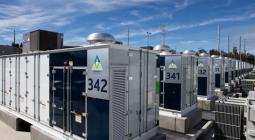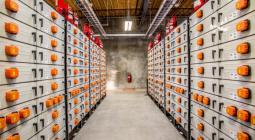How Many L.A. Rooftop Solar Panels to Replace a Natural Gas Power Plant?
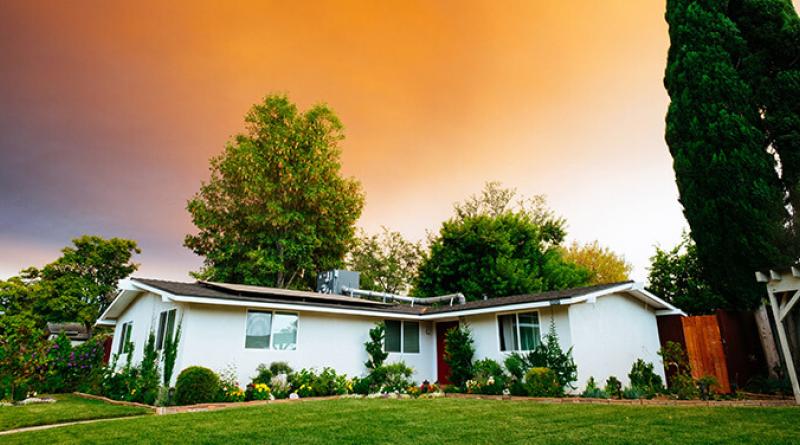
Sunrun’s 2019–2030 Repowering Clean: Gigawatt-Scale Potential for Residential Solar & Battery Storage in Los Angeles “shows how LADWP (the L.A. Department of Water & Power) can raise its targets for local clean energy with residential solar to create a city-wide clean energy ‘virtual power plant’: rooftop solar and battery storage on as few as 75,000 Los Angeles homes can replace peak capacity of one of LADWP’s retiring gas plants.” Moreover, L.A. could save nearly $60 million by doing so, according to the study.
The largest municipal utility in the U.S., by 2030 “LADWP can build a fleet of roughly 150,000 homes and 5,000 apartment buildings with home solar. This goal is achievable: as of 2018, nearly this much rooftop solar has already been deployed in San Diego Gas & Electric’s territory, along with a rapidly increasing amount of battery storage,” Sunrun highlights.
The diminishing need for natural-gas as a bridge fuel to a clean energy future
The ability to generate and manage emissions-free electricity at gigawatt-scale with the reliability, and at a cost that matches, or beats, grid-connected, natural-gas power generation could be a genuine game-changer when it comes to advancing the renewable, zero-carbon energy transition. By doing so, power utilities could leapfrog and avoid investing in a new generation of natural-gas power plants, thereby avoiding all the carbon dioxide, methane and other greenhouse gas emissions, other types of environmental pollution and water resources use that comes with them.
The need for, and benefits of, using plentiful U.S. natural gas a bridge fuel to a clean energy future were prevalent as far back as 10 or more years ago. That view isn’t as prevalent today, Audrey Lee, Sunrun’s vice president of energy services, told Solar Magazine.
With storage costs dropping and efforts to achieve 100% clean energy goals underway, I think it would be imprudent to invest in natural-gas generation now. When plants last 30 or more years, and when at the end of that time you want to be at 100% clean energy, I think it’s much better to invest in solar-storage today.
—Lee said in an interview.
The advantages of taking a VPP approach to the clean energy transition
Installed in homes, businesses and government facilities and then networked to create a virtual power plant (VPP), solar-plus-storage systems have the advantage of being modular and quick to deploy with small physical footprints, Lee continued. Those are big advantages, especially in densely packed urban environments, she pointed out.

Source: Sunrun’s 2019–2030 Repowering Clean: Gigawatt-Scale Potential for Residential Solar & Battery Storage in Los Angeles
More broadly speaking, today’s advanced BESS (battery-based energy storage systems) and VPPs can enhance the reliability, resiliency and efficiency of today’s power grids, according to Lee. They offer an unprecedented amount of flexibility when it comes to the range of grid services they can provide, from ancillary grid services, such as frequency or voltage regulation, to primary, spinning and reserve grid generation capacity, she pointed out.
In a landmark development, Sunrun recently won a bid to provide regional transmission organization (RTO) ISO New England (ISO-NE) with energy capacity at wholesale rates by aggregating electrical power produced by home solar-plus-storage systems distributed across the region.
ISO-NE on Feb. 5 awarded Sunrun a contract to provide 20 megawatts (MW) of peak power capacity aggregated from its Brightbox residential solar-plus-storage systems from 2022–2023, about the amount of electrical power used by 5,000 typical New England utility customers, according to the California-based company.
Putting zero-carbon power generation right where it’s needed
Putting generation and grid distribution capacity right where it’s needed also eliminates all the energy losses associated with long-distance transmission. That translates into higher grid efficiency and lower costs.
Furthermore, today’s advanced BESS are an order of magnitude superior to conventional grid generation and distribution when it comes to some key performance criteria. That includes response time, ramping up and ramping down, as well as black start capabilities.
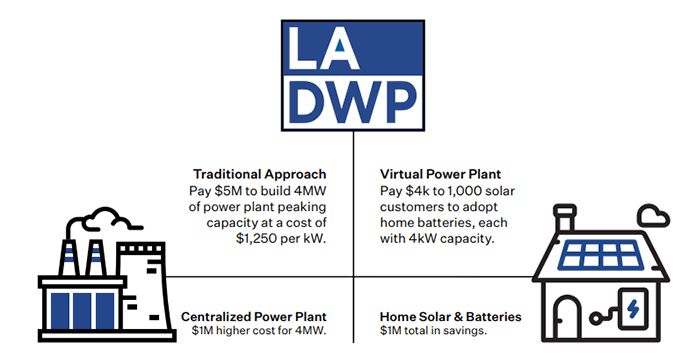
The flexibility of BESS and VPPs poses challenges for project developers, however. Regulatory reforms opening the doors to distributed solar, wind, BESS and VPPs have been instituted in leading U.S. clean energy states, such as California, Hawaii, Massachusetts and New York and they’re gaining traction in others. RTOs responsible for power grids that serve multiple states, such as PJM Interconnection, have been at the forefront of similar efforts.
Generally speaking, power market regulators across the U.S. don’t recognize, allow for or compensate BESS operators for all the grid services BESS can provide, however. The flexibility BESS offer also poses challenges for utilities and their investments in existing generation, transmission and distribution infrastructure, often leading them to oppose regulatory reforms that open paths for BESS or VPPs to compete with them.
Helping realize L.A.’s Green New Deal
A growing roster of U.S. towns, cities and states, including California, as well ascorporations, have set or are working towards 100% zero-carbon or renewable electricity and energy in their own ways.
L.A. Mayor Eric Garcetti in late April introduced L.A.’s Green New Deal, Sustainable City pLAn. In addition to addressing climate change and strengthening the city’s economy, the Green New Deal puts L.A. on course to be carbon-neutral in energy by 2050.
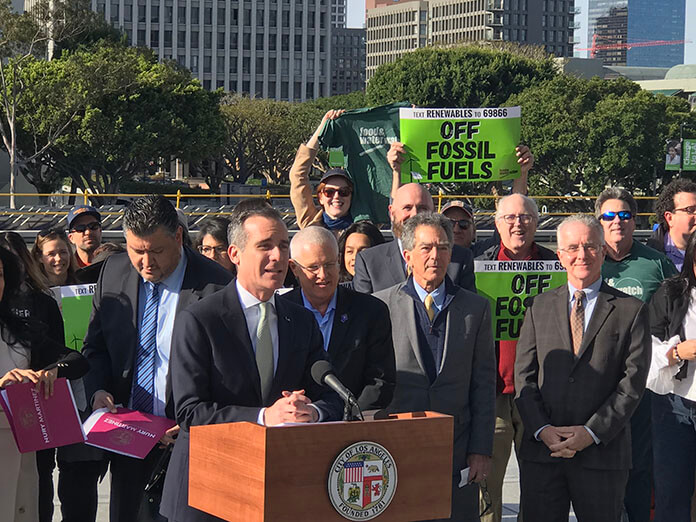
“We have been really impressed with the Mayor’s leadership and LADWP’s decision not to repower three natural-gas power plants. [Repowering them] would have locked the city into decades of fossil fuel emissions and pollution, and held the city back from advancing towards its clean energy goals,” Lee said.
In its study, Sunrun points out that despite advancing, solar energy penetration in L.A. and by LADWP is comparatively low. Approximately 182 MW of residential rooftop solar power capacity has been installed on 36,000 homes, according to Sunrun’s study.
That represents just 2.5% of LADWP’s 1.34 million total residential customers. By way of comparison, 139,000 San Diego homeowners, 11% of San Diego Gas & Electric’s (SDG&E) 1.25 million residential customers, have installed solar PV systems with a combined capacity of 740 MW. “Customers in California’s other utility territories are adopting solar and batteries at nearly the same rates,” Sunrun notes.
Annual residential solar deployments in LADWP’s service territory increased at an average rate of 18% from 2011–2018. Expecting this rate to slow, Sunrun used a 12% annual growth rate to forecast the total number through 2030. Based on that assumption, 147,000 L.A. single-family homes would be equipped with solar, 11% of 1.34 million total residential customers.
That level is less than that achieved in SDG&E’s service territory as of last year and would translate into some 737 MW of solar power capacity from L.A. homes, Sunrun highlights.
A very broad vision for residential rooftop solar
Rolling out “behind the meter,” solar-plus-storage systems and networking them to create a VPP requires a lot in the way of coordination and partnerships between public and private-sector organizations, utilities in particular, Lee pointed out. Doing so isn’t all that different from the demand-response management (DRM) programs some utilities are running today, networking smart thermostats, air-conditioners and heating systems in homes so they can be turned up or down according to the grid, as well as residents’, needs, she explained.
Sunrun has been working along this line. Last September the company joined California’s USD1 billion Solar on Multifamily Housing program, the cost of which is to be covered by the state’s emissions cap-and-trade program. The plan is for Sunrun to install 100 MW or more of solar power capacity at affordable, multifamily housing developments where 80% of residents earn less than 60% of median income in their areas.
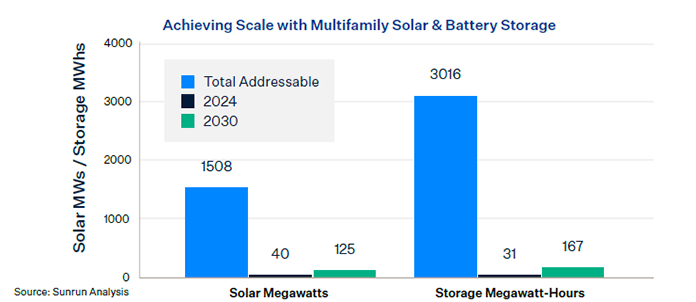
Source: Sunrun’s 2019–2030 Repowering Clean report
“We have a very broad vision for how residential rooftop solar can change our energy system, but we have to make sure that can happen across all income levels,” Sunrun Chief of Policy Anne Hoskins said at the time.
“Multifamily housing provides a valuable opportunity for deploying residential solar and storage. LADWP has existing multifamily programs, but with modification, these programs can grow to have a much greater impact,” according to Sunrun. “For instance, LADWP’s Solar Rooftop Program and Feed-In Tariff Program could both support scaling solar for multifamily housing. By linking these programs with a virtual power plant approach, energy storage can be added to these sites.”
Gigawatt clean energy VPPs, job creation, economic competitiveness and public opinion
Creating gigawatt-scale VPPs based on distributed solar-plus-storage systems would create a lot of jobs, economic activity and enhance local and U.S. economic competitiveness, key elements of L.A.’s Green New Deal, as well as California’s and other 100% renewable or zero-carbon energy strategies’.
Doing so would substantially improve the likelihood of California achieving its 100% zero-carbon-by-2045 energy goal. Joining with Station A and Stem, Sunrun carried out a detailed, building-by-building analysis that identifies techno-economic potential for 48 GW of rooftop solar and 42 gigawatt-hours (GWh) of battery storage statewide.
Collectively, this would provide approximately 9 GW of Resource Adequacy (RA) across the service territories of California’s investor-owned utilities (IOUs), according to the study results. Notably, “this potential was evaluated without grid reliability revenue; the addition of this revenue could increase scale potential even further,” Sunrun highlights.
Public opinion, which includes that of utility customers, plays a prominent role in the evolution of the power industry and markets, as well, Lee pointed out.
A majority of Americans want more clean and renewable energy
The results of a Gallup poll released in late March revealed that most Americans support proposals aimed at “dramatically” reducing fossil fuel use. Sixty percent of respondents said they favor or strongly favor “proposals to dramatically reduce the use of fossil fuels such as gas, oil and coal in the U.S. within the next 10 or 20 years in order to reduce greenhouse gas emissions,” according to the poll.
Furthermore, solar and wind were respondents’ favorites when asked to choose their energy resource preferences. Eighty percent of respondents said they would like to see “more emphasis” on solar power. Seventy percent said the same for wind power. In contrast, just 28 percent said they wanted more emphasis on producing energy from oil and 22 percent from coal.
“Public advocacy groups, environmental justice groups and others don’t want to see more fossil-fuel power plants built,” Lee said. “You’d have no regrets with solar-storage. It’s clean, ‘locationally’ relevant, electricity is delivered where its actually consumed, and local customers can share electricity among themselves.”
27 May 2019
SOLAR MAGAZINE


